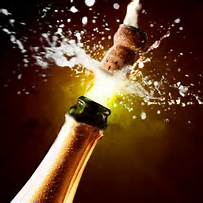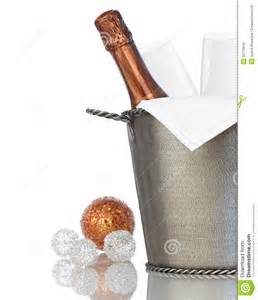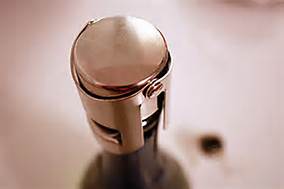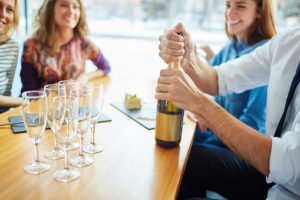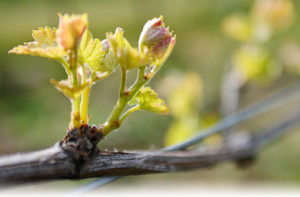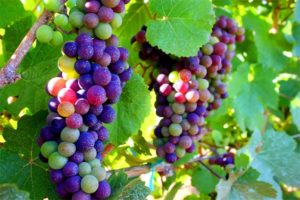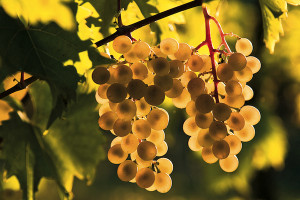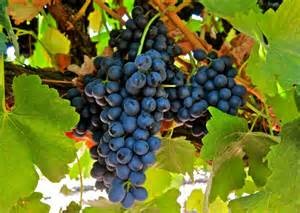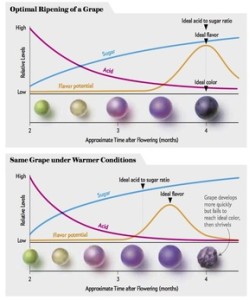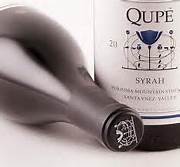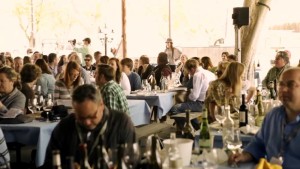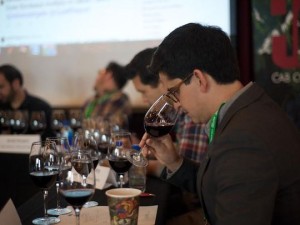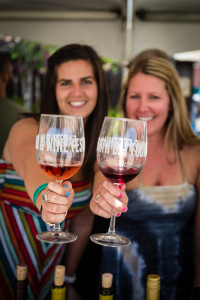Central Coast Wine Insider Blog
The unsung Wine Warrior, Tempranillo
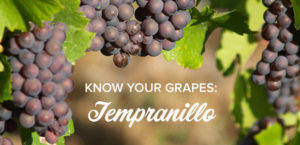 Tempranillo is one of the world’s greatest wines, but one that sadly is too often overlooked by many wine enthusiasts.
Tempranillo is one of the world’s greatest wines, but one that sadly is too often overlooked by many wine enthusiasts.
Capable of great aging, the winemakers of Spain have been aging these wines ten or more years before releasing them to the public for consumption for centuries. These are wines of wonderful complexity and finesse when they mature and can be an absolute joy when you find a good one. The most common fine red wine grape used in Spain, it is arguably at its best in Rioja and Ribera del Duero regions with references to its production found in literature from as far back as the 13th century. It is also widely used in the Duaro region of Portugal where it is known as Tinto Roriz and a major grape used in Port wine blends. None of this is lost on many of the winemakers of California who have been searching around the world for grapes that do well in the Mediterranean climate found here, and Tempranillo was a natural. This is a grape that has an affinity for mountainous terrains as well as areas that offer a great diurnal shift (the difference between the hottest and coolest part of the day- Hello Paso Robles!!) The grape first made its way to California in the early 1900s, but was planted in areas not ideal for vineyards and some particularly prone to Phylloxera, causing significant issues with its continued cultivation. Often used as part of inexpensive red wine blends it didn’t receive fine wine status here until the last ten years or so when it was finally planted to the regions that support it’s viticultural requirements.
Cultivation: A thick skinned black grape that forms fairly tight clusters, Tempranillo is particularly susceptible to pests and mildew. Luckily it is a grape that buds late and ripens early. providing less opportunity to be affected by inclement weather. One unfortunate feature of the grape is that it swells in humid weather, negatively impacting its color and flavor intensity. The good acidity levels demanded of a well made version of this wine requires that its tendency to lower acidity be mitigated by growing it in locations with significant daily temperature swings and blending it with another red wine to ensure its aging ability. This is a vine that particularly likes chalky or calcareous sandy soils or iron rich clays, preferably located on hillsides. Besides California, Portugal, and Spain, Tempranillo is often found in southern France, Chile and Argentina.
Flavor Profiles: Flavor profiles and winemaking style can vary significantly between its home in Spain and the versions being made in California. However, there are some significant similarities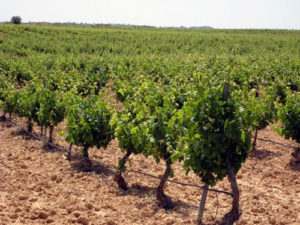 such as red cherries, strawberries, red berries and red plum, as well as a propensity towards an herbal quality, often dill. Both versions often contain the essence of tobacco, vanilla, leather, coffee and tea. The American version can often be quite full bodied wines with significant up front fruit and can resemble a Cabernet Sauvignon with less tannin and generally more acidity. The Spanish versions are generally aged in old American oak and tend towards great vanilla flavor and an earthiness that is less evident in American versions. Aged Rioja versions tend more towards elegant and earthy and can be quite delicate if older making them more reminiscent of a Burgundian Pinot.
such as red cherries, strawberries, red berries and red plum, as well as a propensity towards an herbal quality, often dill. Both versions often contain the essence of tobacco, vanilla, leather, coffee and tea. The American version can often be quite full bodied wines with significant up front fruit and can resemble a Cabernet Sauvignon with less tannin and generally more acidity. The Spanish versions are generally aged in old American oak and tend towards great vanilla flavor and an earthiness that is less evident in American versions. Aged Rioja versions tend more towards elegant and earthy and can be quite delicate if older making them more reminiscent of a Burgundian Pinot.
Wine Pairing Considerations: Pair Tempranillo with similar foods that you would pair with Cabernet Sauvignon or Pinot Noir. It works beautifully with lamb and beef, but because of its good acidity when made well and not overpowering body; can work with bolder fish such as salmon and ahi. A perfect bridge ingredient is dill, an herbal quality often found in the nose of the wine, as well as mushrooms with that great earthiness they share with the wine. Also consider using it with sausage, roast pork and most styles of chicken.
Major California Growing Regions: Clarksburg, Lodi, Paso Robles, San Luis Obispo, Sierra Foothills, Sonoma County.
The Wine Season Turns with the arrival of Veraison
 Veraison, an annual benchmark in the winegrape growing season, is officially underway.
Veraison, an annual benchmark in the winegrape growing season, is officially underway.
Known as the onset of ripening, veraison marks the colorful transition from grape growth to grape ripening, resulting in several changes in fruit development. They not only change color, but they begin to increase in weight and volume as well.
Most dramatically, red winegrapes slowly turn from green to red and purple while white winegrapes change from green to a golden yellow, becoming more translucent. This process occurs over a lengthy period of time and each grape variety ripens at a different rate. Veraison marks an important turning point as the nutrients and fuel for growth shirt from growing vines and roots to growing fruit.
With harvest typically occurring 60-75 days from 50% veraison, growers anticipate that the 2016 harvest could begin as early as September, so keep an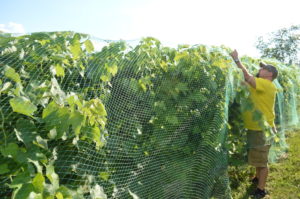 eye on the grapes.
eye on the grapes.
During this time of year, other activities are taking place in the vineyard as well. Vine growth is robust and grape growers are actively caring for leaf canopies to prevent sunburn of the grapes and managing the vineyard floor to minimize weeds, vineyard pests, and hold on to the remaining moisture 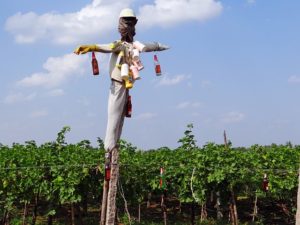 that exists in the soil profile. A variety of methods are used to protect the precious fruit from predators – mainly birds – such as netting, reflective mylar materials, and even good old-fashioned scarecrows!
that exists in the soil profile. A variety of methods are used to protect the precious fruit from predators – mainly birds – such as netting, reflective mylar materials, and even good old-fashioned scarecrows!
While there are still several weeks ahead until harvest, and much still depends on the weather between now and fall, it appears to be shaping up to be another excellent vintage for 2016 her on the Central Coast!
How the Vines make the Wine- the Annual Cycle!
How do things grow from Root to Fruit?
If you’ve ever visited a working vineyard and beheld the vines, you’ve undoubtedly heard the terms bandied about: Bud Break, Fruit Set, Veraison. But how does that seemingly barren chunk of wood you see in December become the fruit laden cornucopia of grape splendor we see in September? To understand, we look at the yearly growth cycle of the wine vine. Come along!
Dormancy of Vines
From leaf fall to the beginning of growth in spring, grape vines are dormant and consist entirely of woody tissue. Relatively little activity occurs during this period. Root growth can still occur unless soil temperatures are too cold to support growth. Cold hardiness within rootstocks can vary depending on genetics, temperature, and temperature fluctuations. Many of the hybrid grape varieties are created to address the lack of hardiness in varieties of grapes in the species Vitis vinifera. As a result, hardiness varies considerably across varieties. In cold climates, hardy hybrid varieties are necessary for grape production
Bud break
As temperatures warm in the spring, stored starch is converted to sugar and sap begins to move in the vine. This can be seen on warm spring days when pruning wounds begin to “bleed”. As temperatures warm, buds begin to swell, then burst (break). The newly emerged shoots grow very rapidly, and will continue to do so for several weeks in the absence of stress. Soon clusters become visible, usually opposite the third and fourth leaves on a shoot.
Bloom and fruit set
After a few weeks, depending on weather conditions, clusters begin to swell, and soon flowers open. The flowering period can be as short as a day or two under warm, dry conditions, or as long as a month under very cool, wet weather conditions. Grapevines are still mostly reliant on stored carbohydrates from the previous season for their energy at this point. After pollination, the flowers abscise and the newly-formed berries go through a rapid period of development due to cell division. Flower cluster primordia for the following season begin to originate in buds at this time, and will continue to develop until veraison. Leaves well exposed to sunlight during this time will result in more fruitful buds in the following growing season. Once the berries are well formed, cell division largely ceases and further berry growth is mostly due to cell expansion. Many leaves on each shoot are fully expanded, and the vine no longer depends on stored carbohydrates for its energy source. For the next few weeks, shoots and berries grow very rapidly.
Veraison and fruit maturation
Approximately five to seven weeks after fruit set, veraison begins. Berries expand further, begin to soften, and accumulate sugar. The color on red cultivars is readily apparent, while the visual indicators of maturity on white cultivars are more subtle. During the next four to six weeks, sugar, pigments, and other flavor compounds increase in the maturing fruit, while organic acids decrease and change forms. Unless there is an excess of water or fertility, shoot growth slows greatly or ceases. The bark of green shoots begins to turn brown from the base, becoming woody by the end of the period. This process is called lignification. On managed plantings, the veraison period ends with harvest
Post-harvest
After harvest, grapevine leaves continue to photosynthesize until frost if temperatures are warm enough. This is a very important period for the vines to accumulate carbohydrates for future growth. As temperatures fall, vines gradually become more cold hardy, and sugars are converted to starch to be stored for the winter, mostly in perennial structures such as roots and trunks. After leaf fall, vines continue to acclimate to cold weather, but no more carbohydrate accumulation occurs.
Want to learn more about how wine is made? Join us at Breakaway Tours and get a behind the scenes look at how it Root to Fruit, from Grape to Glass! Call or email todaymailto:info@breakaway-tours.com or 800-799-7657.
Be the Host with the Most with a Wine Tasting Party!
So You Want to Host A Wine Tasting Party….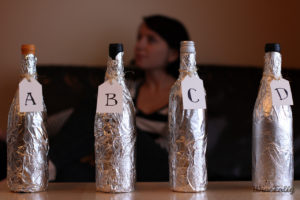
You love wine, and so do your friends. What could be more perfect than throwing a wine tasting party? And then the questions flood into your mental picture: What’s the best format for a wine tasting party?
When you’re hosting your own tasting party there are a couple of things you’ll do differently than a professional trade tasting (sipping vs. spitting) but the basic format is the same. Most wine tastings feature four to eight different wines that have a common theme that ties them together.
Today, we’ll lay out a proven tasting format and a few wine tasting party ideas that are not only useful, but a lot of fun to try!
While there are a myriad of different techniques to decorate the table, if you have well-curated wines it doesn’t matter how the table looks. If you select wines based on a specific theme, people will pay closer attention to what they’re drinking. It also helps if you have wine tasting placemats to write on. You can make your own or find downloads online.
Some Theme Ideas for your Party Can Include:
- Regional
- This pairing focuses on wines from a specific area. Try 4 wines from Edna Valley or Adelaida District in Paso Robles.
- Varietal
- An in-depth way to understand a particular grape or varietal. Buy different price brackets of one type of wine grape (e.g. Syrah or Sauvignon Blanc)
- New World vs. Old World
- One of the classic old world vs. new world tastings is Napa Valley Merlot vs. Right Bank Bordeaux.
- Big and Bold Wines
- Compare and contrast the biggest and boldest varietals from around the world.
- Elegant Wines
- Compare and contrast the lightest red wines on earth. Find out what we mean by ‘elegant’
- Multi-Vintage
- The best way to do this is to ask for library vintages from your favorite winery.
- Price Comparative
- Crowdsource guests to spend less than $20 on a bottle of wine and blind taste them to determine everyone’s favorite.
- Blind Tasting Party
- Wrap bottles in paper bags or aluminum foil and test your tasting skills.
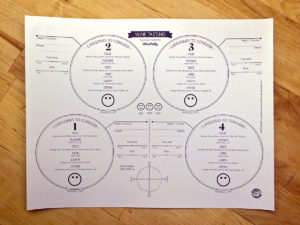 How much wine do I need for a wine tasting party
How much wine do I need for a wine tasting party
½ bottle per guest.
A little over a half a bottle of wine per guest is ideal. For instance, if you have an 8 person party, plan on having about 5 bottles of wine (each guest will receive a half-glass of each bottle). It won’t be too much, but enough to have a great party. In my experience, its fun to start off with an ice breaker aperitif such as Champagne or Prosecco. Nothing more festive than bubbles in your glass!
And don’t forget the best way to gather bottles for your next tasting party: Hop aboard a wine tour with Breakaway Tours & Event Planning and let the R&D (Research and Drink!) begin!
It’s Viognier or the Highway for Summer Whites!
Viognier: A White Wine for Red Wine Drinkers?
As a self -professed lover of red wine, you may ask: is there a white wine you would recommend for red wine lovers? Something with body and bollocks, that I can enjoy as the days heat up and I need something cool in my glass?
The answer is YES. The answer is Viognier.
In 1965 only a miserable 20 acres of Viognier (pronounced Vee-on-yay) grape existed in its Northern Rhône homeland appellation of Condrieu.
Amazing, since it is believed the grape had grown here for at least 2000 years, possibly transported to the Rhône from its birthplace in Dalmatia by the Romans.
Since 1965 the grape and its wine has steadily increased in popularity and in its quality, elevating it to ‘serious drinker’ level.
Condrieu is at the northern end of the Northern Rhône. It consists of seven communes located on steep terraced hills, where Viognier is the only variety of grape allowed in this appellation devoted solely to white wine. Any bottle originating from Condrieu is 100% Viognier. It is said that low yields, difficult growing conditions and late harvesting contribute to the exceptional, concentrated flavors of Condrieu Viognier.
During the 1990s winegrowers from other parts of the Rhône and further afield in France saw the mounting interest in Viognier. Initially the grape was grown to blend with other whites – and reds, bringing extra character to well know varieties, and softening the Syrah wines of the Côte Rôtie. Temperamental it may be but versatile for certain. In present day vineyards on the Central Coast of California it is increasingly being grown in its own right enlarging the range of pure Viognier wines on the shelves of specialist wine shops and supermarkets alike. Many of these wines are lighter, less concentrated that their Condrieu cousins. Nevertheless they retain something of the distinctive Viognier character of spring fruit and floral bouquet and they sell for around the $20-$30 mark …… well within the price range of most white wine drinkers.
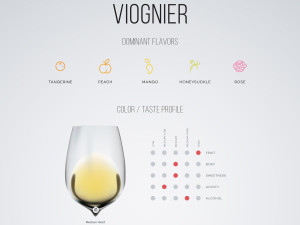 Viognier is a remarkably difficult grape to grow. It is prone to mildew, produces notoriously low and unpredictable yields, and needs to be picked when fully ripe. If it is picked too early it fails to develop its classic aromas and rich tastes. But despite, or perhaps because of, this precariousness fans enjoy the most amazing clear, golden color and the aroma of flowers and fruits in their glass. Many are surprised by the taste; the color and nose hinting at something sweeter but the wine itself showing dry with a variety of nuances both on the palate and finish.
Viognier is a remarkably difficult grape to grow. It is prone to mildew, produces notoriously low and unpredictable yields, and needs to be picked when fully ripe. If it is picked too early it fails to develop its classic aromas and rich tastes. But despite, or perhaps because of, this precariousness fans enjoy the most amazing clear, golden color and the aroma of flowers and fruits in their glass. Many are surprised by the taste; the color and nose hinting at something sweeter but the wine itself showing dry with a variety of nuances both on the palate and finish.
In appreciating the surprising dryness of this wine don’t miss out on the few bottles of late harvested, dessert wines that winemakers are producing.
This is the wine for everyone including the ABCers (Anything But Chardonnay), those are desperate for an alternative white wine that shows some character.
It is best known for its apricot, peach and spice flavors, together with high alcohol (often over the 13% mark) and medium acidity. As with many white wines it is generally best consumed young, although the classic Viogniers of the North Rhône (and increasingly wines from the oldest vines in California and Australia) can develop well for much longer.
You can drink it with many foods or none. Try matching it with spicy Thai cuisine, Chinese takeout, Mexican dishes, medium to strong salty cheeses, strong flavored fish dishes, pork and chicken and fresh fruit.
Call Breakaway Tours today to explore the amazing Viogniers offered right here on the Central Coast! Here are a few we’re especially loving now:
Ranchero Cellars 2013 Viognier, Paso Robles $30
Zaca Mesa 2014 Viognier, Santa Ynez $18
Tolosa 2015 Viognier 1772, Edna Valley $38
A California Dynasty :Malolactic Fermentation and Chardonnay
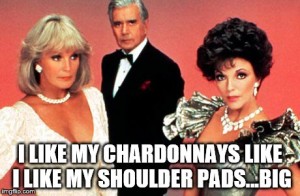 During the 80’s the US fell in love with oaky, buttery Chardonnay. We loved it the same way we loved the family intrigues and endless catfights on mainstream soap operas like Dynasty and Falcon Crest. It was a decade of big shoulder pads, big hair, and even bigger wines. How exactly do winemakers craft the big buttery Chardonnays? It’s called malolactic fermentation.
During the 80’s the US fell in love with oaky, buttery Chardonnay. We loved it the same way we loved the family intrigues and endless catfights on mainstream soap operas like Dynasty and Falcon Crest. It was a decade of big shoulder pads, big hair, and even bigger wines. How exactly do winemakers craft the big buttery Chardonnays? It’s called malolactic fermentation.
The buttery flavor found in specific Chardonnays (California Chardonnays in particular) is due to the presence of diacetyl, a naturally occurring organic compound found in wines that have gone through malolactic fermentation, and it’s the very same compound added to artificially flavored movie theater popcorn and margarine. Yup. Chew on that for a minute. Of course, this begs the question, what is malolactic fermentation?
Often referred to by winemakers as secondary fermentation, malolactic fermentation (MLF) follows on the heels of primary fermentation and, for the most part, will start spontaneously in oak-aged red and white wines. Unlike primary fermentation, which is the conversion of the natural sugar in grapes to alcohol and CO2 by yeast, MLF is a bacterial fermentation. Specifically it’s lactic acid bacteria (LAB), and like in primary fermentation, CO2 is liberated in the process. The main action of malolactic fermentation, why we do it, is the conversion of malic acid to lactic acid.
Perhaps the easiest way to understand the effects of MLF is by visualizing malic acid as the acidity found in a tart green Granny Smith apple. Then think of lactic acid, the acid found in dairy products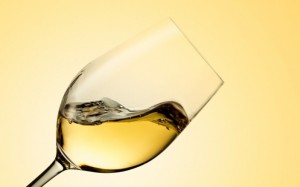 like cultured buttermilk or butter. In red wines, butteriness is not quite so apparent, or if it is, it’s perceived as butterscotch; though it’s important to note that many commercial strains of malolactic bacteria exhibit no buttery aromas and flavors at all. MLF is prized for the softening effect it has on wines; MLF has the ability to reduce harsh acidity and astringency in young red wines in exchange for richness and body and has the ability to deliver the perception of silkiness and even creaminess. Winemakers will also argue that secondary fermentation also helps to better integrate oak into wine’s overall character.
like cultured buttermilk or butter. In red wines, butteriness is not quite so apparent, or if it is, it’s perceived as butterscotch; though it’s important to note that many commercial strains of malolactic bacteria exhibit no buttery aromas and flavors at all. MLF is prized for the softening effect it has on wines; MLF has the ability to reduce harsh acidity and astringency in young red wines in exchange for richness and body and has the ability to deliver the perception of silkiness and even creaminess. Winemakers will also argue that secondary fermentation also helps to better integrate oak into wine’s overall character.
It’s safe to assume that the vast majority of red wines undergo a secondary fermentation, an exception to this rule is Beaujolais Nouveau – and that’s an entirely separate post. It’s also safe to assume that wines that haven’t gone through MLF have retained their malic acid—think of crisp whites fermented in stainless steel.
If you want to explore the difference first hand, try a tart crisp New Zealand Sauvignon Blanc and a white Bordeaux. The Bordeaux Blanc is typically barrel aged while the New Zealand Sauvignon Blanc is not. Then pick up a Napa Valley Chardonnay. Mind – blown. If you have the opportunity, I highly suggest wine festivals like The Chardonnay Symposium or Paso Wine Fest. It will give you the chance to try various wines side by side and speak to winemakers and tasting room staff and hear their take on MLF.
As for Chardonnay, the pendulum has swung in the opposite direction in favor of non-buttery Chardonnays. But still, California Chardonnay is crafted in a range of styles. Some of those early, classically-styled butter bombs still exist and are still quite popular, all in thanks to malolactic fermentation!
Heat Things up or Keep it Cool with your Syrah
2002 TH Estate Wines The Hedge, Paso Robles/ $60
2013 Calcareous Estate Syrah /$49
2007 Stanger Library Reserve Syrah / $48
2014 Wild Coyote Adelaida District Syrah / $25
Wine Festival Season hits the Central Coast!
One of the absolute most exciting things about Spring on the Central Coast? That’s right, its Wine Festival Season! Not sure which one is right for you? Check out the options below, grab your sandals and sunscreen and celebrate the vine with these amazing events.
Hospice du Rhone
Hospice du Rhone is An international vintners’ association that provides promotional and educational opportunities to the wine industry, trade and Rhône enthusiasts. Each year over 1,200 Rhône lovers converge in Paso Robles, California USA for the annual Hospice du Rhône Festival. The group is a mix of Rhône producers and importers, wine industry representatives, restaurateurs, Sommeliers and enthusiasts who possess an unwavering passion for the 22 Rhône varieties. The event hosts upwards of 160 Rhône wine producers and importers, from throughout the world at the Friday Rhône Rendezvous and the Saturday Grand Tasting. These worldly Rhône wine producers and imports gathered from France, South Africa, Australia, Spain, Chile and the USA. The states represented from the USA are Arizona, California, Oregon and Washington.
Tickets to attend the Paso Robles installment are now on-sale through the organizations website! This weekend, dedicated to nothing but Rhônes, will include four in-depth educational seminars, two spirited tastings and three lively meals. Attendees should gear up for a weekend of serious Rhône fun brimming with Rhône wines, Rhône zealots and Rhône producers from throughout the world. Passes are currently on sale for the Paso Robles Installment of Hospice du Rhône taking place April 14 – 16, 2016 at the Paso Robles Event Center in Paso Robles, California. Event and Seminar passes begin at $100. To purchase passes and to learn more visit www.hospicedurhone.org.
CAB’s of Distinction Media, Trade & Sommelier Events
If you’re ready to get your CAB on, here the Festival for you! With Seminars like :Know Your Cab Clones: Learn how to differentiate the different clones of Cabernet in Paso, and how choices in the vineyard are elevating Paso Robles wines. Join this session for an opportunity to taste and compare five different Cabernet Sauvignon clones and discuss vineyard and winery practices with the winemaker panel.
And there’s a bot o’ the ol’ competish here as well. Take the final seminar – The Judgment of Paso. Just as the Judgment of Paris proved that California Napa Valley Cabernet and Chardonnay were on a level playing field with Bordeaux in 1976, we aim to show that Paso Robles has risen to a global stage along with celebrated appellations like Napa and Bordeaux in producing superior Cabernet Sauvignon. Join this session for an opportunity to blind-taste and compare eight different Cabernet Sauvignons along with a panel of top sommeliers. After each wine is tasted, and its region strategically analyzed and guessed, it will be revealed!
If you’re in the mood to sip more than study, there’s the En Primeur & Current Vintage Tasting: Be the first to sample the latest vintages from both the barrel and just-released bottle from all 22 member wineries.
Info can be found at the Paso Robles Cab Collective’s website www.pasoroblescab.com
Earth Day Food and Wine Festival
The Earth Day Food & Wine Main event delivers a top quality food and wine experience paired with a casual, low-key atmosphere, all while celebrating the passionate people behind a sustainable food movement. Nestled under the oaks at Castoro Cellars in Templeton, California on April 23, premiere entry begins at 1pm, with general admission at 2pm. Wear your boots, wear your flip-flops. Relax at VIP tables, or enjoy yourself picnic style. Event proceeds benefit educational scholarships for relatives of farmworkers and Spanish education programs of the Vineyard Team.
Borne from the desire to share sustainable wine and food with hungry eaters and caring connoisseurs, Earth Day Food and Wine has become the acclaimed culinary experience of the season. Forget the carrot sticks—these chefs, farmers and winemakers are serving up sustainable fare that dares to be delicious.
For ten years Earth Day Food and Wine Festival has set the bar for top quality food and wine experiences, with the added bonus of celebrating a sustainable food culture. Tickets begin at $75 for the Main Event. From twenty-somethings to seventy-somethings, the goal is to connect like minded folks all for the greater good!
Additional info and tickets here: www.earthdayfoodandwine.com
These amazing Events are only the beginning of a season of incredible Wine Exploration. Stay tuned to the Breakaway Blog for the latest on Wine Festival happenings around the Central Coast!
California Zinfandel : What you Need to Know!
The Scoop on Zinfandel
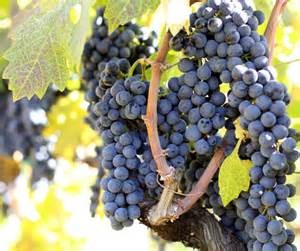
As we gear up for Vintage Paso: Zinfandel Weekend March 18-20th 2016, I got a little curious as to the origins of this prolific Paso Robles varietal. Zin and the Paso Robles AVA have gone hand in hand for some time, so I had to wonder: How did this perfect match come about?
The Science
Until relatively recently, Zinfandel was California’s “mystery grape” because its origins were unknown. DNA testing has confirmed that Italy’s Primitivo and Crljenak Kastelanski, an ancient Croatian varietal, are genetically identical to Zin grapes. However, differences in vine vigor and cluster size separate the new world grape from its genetic twins, and further differences in cultivation, terroir, and winemaking techniques combine to give it it’s own particular flavor profile with a truly American name, history and style. On wine labels, U.S. regulations require that Zinfandel and Primitivo be identified separately.
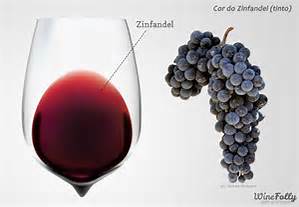
The History
Studies indicate that the grape used for making California Zinfandel probably originated in Croatia. Researchers believe that in the 1820s a nursery owner brought vine cuttings that were Croatian in origin to the United States from an Austrian collection. The Zinfandel name, however, is truly American—the earliest and only documented use of the name is in America where a Boston nursery owner advertised Zin cuttings for sale in 1832.
The Stats
Zinfandel was introduced to California during the Gold Rush somewhere between 1852 and 1857 and became widely planted because it thrived so well in the state’s climate and soil. Today, it’s the third-leading wine grape variety in California, with more than 47,000 acres planted and 355,599 tons crushed in 2014, according to California Department of Food and Agriculture. It is grown in 45 of California’s 58 counties. Promoted to the world by the state’s vintners for more than 130 years, it has grown beyond cult status and is now internationally recognized due to the unique character and high quality wines that are produced only in the Golden State!
Popular descriptors for this varietal include blackberry, raspberry, boysenberry, cherry, as well as black pepper, cloves, anise and herbs.
Local Recommendations
For a Zin that has silky tannins and a bit of spice, try Stienbeck Wines 2012 Zinfandel $43, Fermented in stainless steel tanks and aged in neutral French oak, Paydirt’s 2014 Zinfandel $25, shows notes of smoke, dark fruit and anise. If you’re looking to splurge, try Turley’s 2013 Dusi Vineyard Zinfandel $75 Cherry compote, cocoa powder and molasses balanced by a nice acidity.


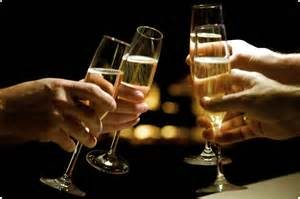 opening a bottle of sparkling wine may not be intuitive, it is quite easy and we will give you a few tips on how to do it best. You want to open a Champagne bottle in a way that both respects the precious beverage inside the bottle but is also elegant and fun. While we recognize that not all bubbles are champagne (we have love for prosecco, cava and sparkling whites as well!) for today, we will us the term champagne to stand in for all these marvelous libations!
opening a bottle of sparkling wine may not be intuitive, it is quite easy and we will give you a few tips on how to do it best. You want to open a Champagne bottle in a way that both respects the precious beverage inside the bottle but is also elegant and fun. While we recognize that not all bubbles are champagne (we have love for prosecco, cava and sparkling whites as well!) for today, we will us the term champagne to stand in for all these marvelous libations!